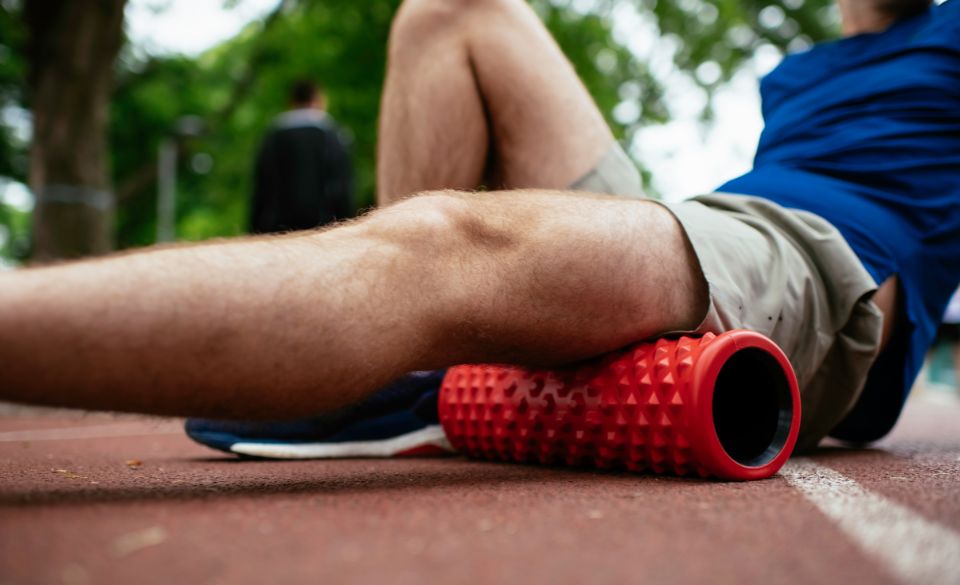
Mobility Plan for Runners: How to Improve Performance & Prevent Injuries
Page Contents
Running is a popular form of exercise and a great way to improve your fitness level. However, as with any physical activity, it comes with the risk of injury. To prevent injuries and improve your performance, it’s essential to include a mobility plan in your training regimen. In this article, we’ll discuss the benefits of mobility training and provide you with a comprehensive mobility plan for runners.
What is a Mobility Plan?
A mobility plan is a set of exercises that improve your range of motion, flexibility, and joint stability. It can include dynamic warm-up exercises, foam rolling, static stretching, strength training, and yoga. These exercises help prepare your body for the physical demands of running and reduce the risk of injuries.
Benefits of a Mobility Plan for Runners
A mobility plan is an essential part of a runner’s training regimen, as it can provide several benefits that can help improve performance, prevent injuries, and promote overall fitness. Here are some of the key benefits of a mobility plan for runners:
1. Improved Range of Motion: Mobility exercises can help improve your range of motion, which is important for efficient running form. By increasing your range of motion, you’ll be able to move more freely and easily, which can help reduce the risk of injury and improve your overall running performance.
2. Increased Flexibility: Flexibility is essential for runners because it can help improve stride length and reduce the risk of injury. Mobility exercises can help improve your flexibility by stretching your muscles, tendons, and ligaments, which can help you move more fluidly and with less effort.
3. Enhanced Joint Stability: Strong and stable joints are important for runners because they help support your body weight and absorb the impact of each foot strike. Mobility exercises can help strengthen the muscles that support your joints, such as your hips, knees, and ankles, which can help reduce the risk of injuries like sprains, strains, and tendinitis.
4. Reduced Muscle Soreness: Mobility exercises can help reduce muscle soreness and stiffness, which can help you recover faster after a workout. By increasing blood flow to your muscles and promoting the release of tension, mobility exercises can help speed up the recovery process and improve your overall fitness.
5. Improved Balance and Coordination: Mobility exercises like yoga and balance drills can help improve your balance and coordination, which are important for maintaining good running form and preventing falls and injuries.
6. Increased Mental Focus: A mobility plan can also help increase your mental focus and concentration, which can help you stay motivated and engaged in your training. By incorporating mindfulness exercises into your mobility plan, you can improve your mental clarity and reduce stress and anxiety.
In summary, a mobility plan can provide numerous benefits for runners, including improved range of motion, increased flexibility, enhanced joint stability, reduced muscle soreness, improved balance and coordination, and increased mental focus. By incorporating mobility exercises into your training regimen, you can take your running to the next level and achieve your fitness goals while minimizing the risk of injuries.
Mobility Plan for Runners
A mobility plan for runners can help improve your performance, prevent injuries, and enhance your recovery. Here are some examples of exercises that you can include in your mobility plan:
1. Dynamic Warm-up: A dynamic warm-up is essential for preparing your body for running. It should include exercises that activate your muscles and increase your heart rate. Examples include:
– Leg swings: Stand facing a wall or a sturdy object, and swing one leg forward and backward while keeping the other leg straight.
– Walking lunges: Take a step forward with one leg and lower your body until your front knee is bent at a 90-degree angle. Then step forward with the other leg and repeat.
– High knees: Stand in place and lift your knees up toward your chest, alternating between your left and right legs.
2. Foam Rolling: Foam rolling is a type of self-massage that can help release tension in your muscles and reduce the risk of injury.
Here are some examples of foam rolling exercises:
– IT band roll: Lie on your side with the foam roller under your hip. Roll from your hip down to your knee, pausing on any tender spots.
– Quad roll: Lie face down with the foam roller under your thighs. Roll from your hips down to your knees, pausing on any tender spots.
– Calf roll: Sit with your legs straight and the foam roller under your calves. Roll from your ankles up to your knees, pausing on any tender spots.
3. Static Stretching: Static stretching can help improve your flexibility and reduce muscle soreness. Here are some examples of static stretching exercises:
– Hip flexor stretch: Kneel on one knee with your other foot planted on the ground in front of you. Lean forward to feel a stretch in your hip flexors.
– Hamstring stretch: Sit on the ground with one leg straight and the other bent. Reach forward to touch your toes and feel a stretch in your hamstrings.
– Calf stretch: Stand facing a wall with your hands on the wall. Step one foot back and press your heel into the ground to feel a stretch in your calf.
4. Strength Training: Strength training can help improve your joint stability and prevent injuries. Here are some examples of strength training exercises:
– Squats: Stand with your feet shoulder-width apart and lower your body until your thighs are parallel to the ground.
– Lunges: Take a step forward with one leg and lower your body until your front knee is bent at a 90-degree angle.
– Calf raises: Stand on a step with your heels hanging off the edge. Raise your heels up as high as you can, then lower them down.
5. Yoga: Yoga can help improve your flexibility, balance, and stability. Here are some examples of yoga poses that are beneficial for runners:
– Downward-facing dog: Start on your hands and knees, then lift your hips up and back to form an inverted V-shape with your body.
– Warrior II: Stand with your feet wide apart and turn your left foot out. Bend your left knee and extend your arms out to the sides, then repeat on the other side.
– Tree pose: Stand on one foot and place the sole of your other foot on your inner thigh. Balance here for several breaths before repeating on the other side.
Incorporating these exercises into your mobility plan can help you improve your performance, prevent injuries, and enhance your recovery as a runner. Remember to listen to your body and adjust the plan as necessary to meet your individual needs and goals.
Full list of mobility exercises for runners
Here is a full list of mobility exercises for runners that you can include in your mobility plan:
Dynamic Warm-Up Exercises:
– Leg swings
– Walking lunges
– High knees
– Butt kicks
– Toy soldiers
– Knee hugs
– Ankle circles
– Arm circles
– Side shuffles
Foam Rolling Exercises:
– IT band roll
– Quad roll
– Calf roll
– Back roll
– Glute roll
– Hamstring roll
– Adductor roll
– Shoulder roll
– Chest roll
Static Stretching Exercises:
– Hip flexor stretch
– Hamstring stretch
– Calf stretch
– Quad stretch
– Glute stretch
– Shoulder stretch
– Chest stretch
– Tricep stretch
– Upper back stretch
Strength Training Exercises:
– Squats
– Lunges
– Calf raises
– Glute bridges
– Plank
– Push-ups
– Leg press
– Leg curls
– Leg extensions
Yoga Poses:
– Downward-facing dog
– Upward-facing dog
– Warrior I
– Warrior II
– Triangle pose
– Tree pose
– Pigeon pose
– Child’s pose
– Seated forward fold
Remember to start with a dynamic warm-up before moving on to foam rolling, static stretching, strength training, and yoga. The order of these exercises can vary depending on your goals and personal preferences. Be sure to listen to your body and adjust the plan as necessary to meet your individual needs and goals.
Final Words
Research studies have consistently shown that incorporating a mobility plan into a runner’s routine can lead to significant improvements in performance, injury prevention, and recovery. For example, a study published in the Journal of Strength and Conditioning Research found that runners who completed a 6-week mobility program experienced increased range of motion and reduced muscle soreness after a 5K race compared to those who did not participate in the program. Additionally, another study published in the British Journal of Sports Medicine found that runners who completed a 12-week strength training program had a reduced risk of running-related injuries compared to those who did not participate in the program.
These findings highlight the importance of including mobility exercises, such as dynamic warm-ups, foam rolling, static stretching, strength training, and yoga, in a runner’s routine. By consistently implementing a mobility plan tailored to individual needs and goals, runners can optimize their performance and reduce the risk of injury.
In summary, the benefits of a mobility plan for runners are supported by scientific evidence. Incorporating a variety of mobility exercises into your routine can improve your running experience, allowing you to perform better, recover faster, and stay injury-free


